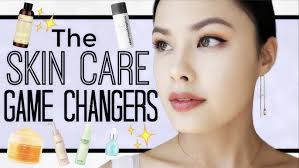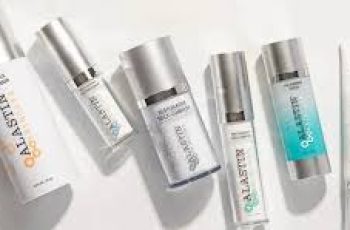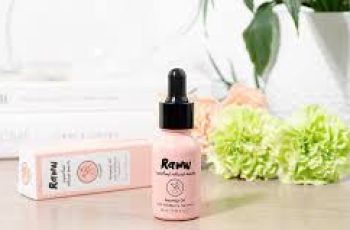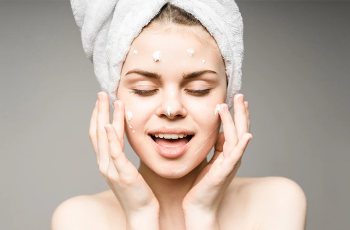
.webp)
.webp)
.webp)
How Do Polyhydroxy Acids (PHAs) Benefit the Skin?
.webp)
.webp)
If you’re into skincare, chances are your routine includes some powerful ingredients.
.webp)
.webp)
.webp)
You might already be using AHAs like glycolic acid, BHAs, retinol, or hyaluronic acid.
.webp)
.webp)
These actives are known for delivering noticeable results to the skin.
.webp)
.webp)
.webp)
Still, skincare can get confusing with all the new trends and ingredients.
.webp)
.webp)
Once you find the right routine, though, it can be life-changing for your skin.
.webp)
.webp)
.webp)
Now, there’s a new buzzword making waves in skincare: PHAs.
.webp)
.webp)
PHA stands for Polyhydroxy Acids—a newer generation of exfoliating acids.
.webp)
.webp)
.webp)
You may be wondering how these differ from the acids you already know.
.webp)
.webp)
Let’s dive into what PHAs are, how they work, and why your skin may love them.
.webp)
.webp)
.webp)
What Are Polyhydroxy Acids (PHAs)?
.webp)
.webp)
PHAs are chemical exfoliants that are often described as “gentler cousins” to AHAs and BHAs.
.webp)
.webp)
.webp)
They share similar benefits but with a softer approach, especially for sensitive skin types.
.webp)
.webp)
PHAs are known as second-generation hydroxy acids, offering exfoliation with less irritation.
.webp)
.webp)
.webp)
The most well-known PHAs are gluconolactone, lactobionic acid, and galactose.
.webp)
.webp)
These acids work by removing dead skin cells from the surface of your skin.
.webp)
.webp)
.webp)
They help to restore a more even tone, refine texture, and boost radiance.
.webp)
.webp)
By sloughing off dead cells, they allow serums and moisturizers to penetrate better.
.webp)
.webp)
.webp)
This makes the rest of your skincare routine more effective and fast-acting.
.webp)
.webp)
PHAs are also rich in antioxidants, helping to fight free radical damage.
.webp)
.webp)
.webp)
They support the production of collagen and elastin, promoting firmer and smoother skin.
.webp)
.webp)
As a result, they contribute to a reduction in signs of aging like fine lines and wrinkles.
.webp)
.webp)
.webp)
What Does PHA Do for Your Skin?
.webp)
.webp)
If your skin reacts poorly to strong exfoliants, PHAs may be just what you need.
.webp)
.webp)
.webp)
They’re known for being gentle enough for dry, sensitive, and reactive skin types.
.webp)
.webp)
Unlike AHAs and BHAs, PHAs are unlikely to cause stinging, redness, or irritation.
.webp)
.webp)
.webp)
Here are the key skin benefits of PHAs:
.webp)
.webp)
Suitable for sensitive and very dry skin types
.webp)
.webp)
.webp)
Exfoliate dull, flaky skin by removing dead cells from the surface
.webp)
.webp)
Improve absorption of serums, oils, and moisturizers applied afterward
.webp)
.webp)
.webp)
Stimulate collagen and elastin production to fight signs of aging
.webp)
.webp)
Contain antioxidant properties that neutralize environmental damage
.webp)
.webp)
.webp)
Do not cause photosensitivity like other exfoliating acids
.webp)
.webp)
Help the skin retain moisture thanks to natural humectant properties
.webp)
.webp)
.webp)
These benefits make PHAs a great alternative if you’ve struggled with other exfoliants.
.webp)
.webp)
How Are PHAs Different from AHAs and BHAs?
.webp)
.webp)
.webp)
The key difference lies in the size of the molecule.
.webp)
.webp)
PHAs have larger molecules than AHAs and BHAs, so they don’t penetrate deeply.
.webp)
.webp)
.webp)
Instead, they work gently on the outermost layer of skin.
.webp)
.webp)
This makes them much less irritating, especially for skin that’s prone to sensitivity.
.webp)
.webp)
.webp)
AHAs like glycolic acid can penetrate deeper and sometimes cause redness or dryness.
.webp)
.webp)
BHAs like salicylic acid go even deeper, targeting oily pores and acne.
.webp)
.webp)
.webp)
PHAs, on the other hand, stay near the surface and exfoliate without disturbing lower layers.
.webp)
.webp)
This also means they don’t make your skin as sensitive to the sun as AHAs and BHAs do.
.webp)
.webp)
.webp)
Still, using daily SPF 30 is recommended to protect against UV damage.
.webp)
.webp)
How Often Should You Use PHAs?
.webp)
.webp)
.webp)
Despite being gentle, PHAs are still exfoliants and should be used with care.
Start slowly—two to three times per week is a good starting point.
You can use them in cleansers, toners, serums, or moisturizers depending on your routine.
If you have very sensitive skin, perform a patch test before regular use.
Consult with a dermatologist if you have conditions like rosacea or eczema.
Once your skin builds tolerance, you may be able to use PHAs daily.
Avoid over-exfoliating, as this can damage the skin barrier and lead to irritation.
Signs of overuse include redness, flakiness, and increased sensitivity.
PHAs for Oily and Acne-Prone Skin
Oily and acne-prone skin types often benefit from BHAs, but PHAs offer a gentler option.
They can help exfoliate the skin while calming inflammation and soothing irritation.
This makes PHAs an ideal choice for those who experience breakouts but also have sensitive skin.
By removing dead skin cells and preventing pore blockage, PHAs promote a clearer complexion.
They help balance oil production without overly drying or stripping the skin.
This is especially helpful if your skin reacts poorly to salicylic acid or benzoyl peroxide.
Can You Use PHAs With Other Ingredients?
Yes—but proceed with caution.
Mixing PHAs with other active ingredients like retinoids, AHAs, or BHAs can overwhelm your skin.
Too many actives at once can trigger irritation, dryness, or breakouts.
If you’re combining PHAs with other exfoliants, start on alternate days.
Introduce one active ingredient at a time so you can monitor your skin’s response.
Retinoids and PHAs can be used together, but watch closely for signs of sensitivity.
If you’re using a prescription-strength retinoid, consult your dermatologist first.
Do PHAs Help With Skin Conditions?
PHAs are not just for beauty—they’re therapeutic, too.
Their hydrating and antioxidant properties make them suitable for skin with eczema or rosacea.
They can help reduce inflammation and improve the skin’s barrier function.
Dry, flaky, and dehydrated skin types will benefit from PHAs’ humectant abilities.
They draw moisture from the environment and help lock it into the skin.
This makes PHAs a go-to for maintaining a calm, balanced complexion.
Are PHAs Right for My Skin?
If your skin is sensitive, reactive, dry, or prone to redness, PHAs are a smart choice.
They’re effective enough to improve tone and texture but gentle enough for daily use.
PHAs are a good entry point into the world of chemical exfoliation.
Even if you don’t have sensitive skin, PHAs can still be useful in your routine.
They can help with early signs of aging, dullness, and uneven skin tone.
Their compatibility with most skin types makes them one of the most versatile acids available.
If you’re unsure of your skin type, take a skin analysis quiz or consult a skincare expert.
Understanding your skin’s unique needs will help you pick the best products and ingredients.
Final Thoughts: Are PHAs the Missing Step in Your Routine?
PHAs may be one of the best-kept secrets in modern skincare.
They offer many of the same benefits as stronger acids—but without the harsh side effects.
Their ability to exfoliate, hydrate, and support skin health makes them a standout ingredient.
Unlike many active ingredients, PHAs don’t require extreme caution or downtime.
They offer a safe way to smooth and renew your skin even if you’re just starting out.
So whether your skin is sensitive, dry, or just craving a gentle glow-up, PHAs could be the answer.
It’s remarkable how one gentle ingredient can make such a big difference.
Once you start using PHAs regularly, you might wonder how your skincare routine ever did without them.



